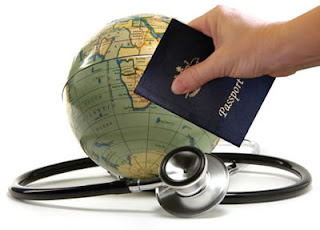Related article: Social Protection in the United States of America.
In the United States, health insurance depends upon mainly private insurers. The public authorities guarantee care for the elderly ( Medicare ) or poor ( Medicaid ). On the other hand, and contrary to popular belief, even the uninsured have access to free health care provided by public hospitals, community health centers, hospitals, etc .. According to the data OECD, public spending on health is $ 2,464 per capita.
In 2010, 83.5% of Americans had health insurance and 50 million were private. This rate, however, must be qualified: half of those uninsured is under the age of 35 and the distribution of uninsured by age than 95% of health problems affecting insured populations. In addition, two-thirds of the uninsured have incomes above $ 25,000 and households whose incomes are below the poverty line, only one-fifth of the uninsured According to Bundorf and Pauly in the Journal of Health Economics, "three-fourths of fourths of uninsured Americans could afford health insurance without breaking their budget constraint." It is therefore, rather non-voluntary insurance.
A significant portion of contributions, 30% is not reinvested in health but share administrative costs, marketing and profits health insurance cost twice as much as in France: 5500 USD per person in 2005, it represents 16% of GDP.
The reform of the health insurance required by U.S. President Barack Obama is voted by the Senate in November 2009 and by the House of Representatives March 21, 2010. It requires all Americans to buy insurance by 2014 or face a fine. It prohibits insurance refuse to cover their policyholders because of their medical history. It provides financial assistance to families with incomes below 88,000 dollars per year. The reform is expected to cost $ 940 billion (695 billion) over ten years. Its funding should be provided by taxes on high incomes and lower care costs.
Canada
In education and health, it is the provinces administer policies and budgetary allocations in these sectors, following the division of authorities and responsibilities of federal, provincial, regional and municipal levels.
Quebec
The basic health care to the citizens of Quebec is covered since 1970, by the Régie de l'assurance-maladie du Québec (RAMQ), a government agency under the Quebec Ministry of Health and Social Services of Quebec.
Germany
Based on the principles of professional insurance through the company and Welfare, the German system is in a process of reform since the late 1980s including a financial and organizational.
In 1883, the Law on Health Insurance introduces the implementation of compulsory insurance for workers in the industry. Entered into force in 1914, the system remains the main legal basis for legislation on health insurance until the adoption in 1988 of the first law for the reform within the health system.
- Public Plan: 88% of the population are affiliated. Health insurance is mandatory below a certain income threshold.
- Private Plan: 12% of the population are affiliated. Beyond a certain income level, people can opt for the legal or private insurance. This private insurance covers 10% of the population has the opportunity to choose not the compulsory membership system beyond a threshold of income but can also combine the two types of public and private protection.
The characteristics as the German system are:
social security contributions (employee and employer) fund the majority of disease risked the health insurance in which sit representatives of funders (trade unions and employers' organizations) have a role manager a very wide range (nearly three hundred different public funds) and autonomy of health insurance (they each freely determines their contribution rates, which are different from one fund to another) the third-party payer generalized the important role of collective bargaining between unions and representatives of doctors and hospitals, the federal system that gives an significant role to the states (particularly in hospitals).
The German health insurance system is close to the French model in its philosophy and facing similar challenges.
In Germany, the homeless no longer benefits from health insurance.
Belgium
The disability insurance is an insurance "care health "mandatory managed by the National Institute of Disability Insurance (INAMI). It is a cornerstone of the Belgian social security.
This insurance is a deficit of 634 million euros in 2004, mainly because of the aging population and the degradation of the "number of contributors" / "number of beneficiaries."
The Belgian federal government in accordance with industry players seeks medical solutions for this problem. The increased use of generic drugs, efficacy equivalent drug major brand but much cheaper, for example, would reduce drug costs (at the expense of the pharmaceutical industry). Reducing unnecessary medical examinations is another track. Others argue for regionalization of health insurance, arguing that the Flemish Walloons over consumers subsidize health care.
